Why you need an Odyssey Triple Track putter
Published: Last updated:
If you struggle with alignment on the greens, Odyssey Triple Track putters and Callaway Triple Track golf balls are proven to make it easier than ever before, helping you hole more putts and lower your golf scores.
How important is alignment when putting? We’ll let Phil Kenyon explain. “How you ‘see straight’ could be affecting your alignment,” says the renowned putting coach.
RELATED: Odyssey reveal “best-ever” 2-Ball putter
“A lot of amateurs struggle to start the ball online because they have a perceptual bias. By that I mean their perception of what appears straight is skewed. As a result they feel more comfortable aiming incorrectly.
“One of the best tests you can do, regardless of your technical style or approach, is challenging your ability to start the ball online.
“If you can’t start the ball on your intended start line, you run the risk of losing consistency and being forced to make compensations with your green reading or speed.”
RELATED: Best Winter Golf Balls

To give golfers an alignment hand, Odyssey launched its range of Triple Track putters earlier this year, which work in tandem with Callaway’s Chrome Soft Triple Track balls to create the most helpful putting alignment device ever conceived – and it’s as effective as it is simple.
RELATED: Best Putters 2020
Brands often boast about how much time, effort and financial resource their R&D departments put into new products – but Callaway will happily admit that very little of their $40 million annual research budget was spent on Odyssey’s new Triple Track putters.
General manager Sean Toulon told us that as soon as he and his team saw Callaway’s new Triple Track golf ball last year, they knew they just had to use the three-stripe alignment idea on a new range of Odyssey putters too.
RELATED: Putting coach Phil Kenyon saves you six shots per round
“I didn’t have a red Sharpie in my office at the time, but I did have a blue one, so I drew two blue lines on a 2-Ball putter. Then I ran to Luke Williams’ office and he drew the red line down the centre. Right there, we knew we had our new Triple Track putters. It really was that simple.”
What is Triple Track Alignment?
The Wikipedia definition of vernier acuity is “a type of visual acuity – more precisely of hyperacuity – that measures the ability to discern a misalignment among two line segments or gratings.” In layman’s terms, vernier acuity refers to the brain’s ability to identify subtle differences in alignment detected in the eyes.
With the right kind of multiple reference points – like a centre line flanked by two parallel lines – the brain perceives the straightness of aim better. It’s a technology used in gun sights and the landing strips on aircraft carriers.
What are the benefits of an Odyssey Stroke Lab shaft?
Odyssey’s multi-material putter shaft saves 40g of weight, which is redistributed to the head and grip end of the putter. This rebalances the club to improve tempo and consistency in the stroke; research suggests your face angle at impact is up to 13 percent more consistent with Stroke Lab.

What does the Odyssey Microhinge Star insert do?
The new Star insert provides a firmer feel and enhanced sound at impact while maintaining the same roll benefits of Odyssey’s popular White Hot Microhinge insert. The Microhinges ‘bend’ back at impact, then spring forward to reduce skidding and encourage the ball to start rolling more quickly.
RELATED: New Odyssey putters see a legend return
Which Odyssey Triple Track putter is best for your golf game?

Odyssey Triple Track Ten / Ten S
RRP: £269
It’s taken ages for higher MOI putters [that offer more forgiveness] to really catch on in the pro ranks, but it’s slant neck technology [bottom] making it possible to create toe-hang in these mallet models that’s convincing the best players to ditch their blades.
The Ten has a lightweight body and heavy back weighting so it ranks as a high MOI option, which means it’s forgiving. Available as a double bend [face balanced] or slant neck [24° toe hang] option, the Ten can suit either straight or arcing strokes.
REVIEWED: Odyssey Triple Track Ten putter

Odyssey Triple Track Double Wide / Double Wide Flow Neck
RRP: £239
Available as both a double bend shaft and flow neck option, and it’s imperative to get the right one to ensure the putter works with, not against, your stroke.
The Double Wide has zero toe hang so it works best in the hands of golfers who swing the putter straight back and through, whereas the Flow Neck comes with 42 degrees of toe hang, more suited to arcing strokes.
REVIEWED: Odyssey Double Wide putter

Odyssey Triple Track Seven / Seven S
RRP: £239
Over the years Odyssey’s #7 shape has been a huge hit with both Tour pros [Henrik Stenson won The Open with one] and club golfers.
The fanged design not only helps visualise the putter’s path, but by splitting mass, it ups MOI and forgiveness.
The Seven is face balanced, so suits straighter strokes whereas the Seven S has a slant neck and 40° of toe hang so it suits arcing strokes and players who like to feel the putter “release” through impact.
REVIEWED: Odyssey Triple Track Seven putter

Odyssey Triple Track 2-Ball Blade / 2-Ball
RRP: £269
The 2-Ball Blade is built on the chassis of a traditional toe- and heel-weighted blade putter with 21 degrees [mid] of toe hang. The longer Triple Track sightlines and two golf ball sized white discs are a great option for golfers who like blade putters, but also have a soft arcing stroke and need extra help aligning squarely at the target.
If there was ever a criticism of the original 2-Ball, it’s how the head didn’t have any straight edges. Three Triple Track lines brilliantly step over that hurdle. The 2-Ball comes as a face balanced model [with double bend shaft] which means it’s naturally more suited to straighter putting strokes.
REVIEWED: Odyssey Triple Track 2-Ball putters

Odyssey Triple Track Marxman
RRP: £239
There’s a real correlation between putters that golfers describe as “suiting their eye” and aligning squarer to the target. So if you particularly like a long sightline that runs all the way to the back of the ball [giving you a seamless look between the putter and Callaway’s Chrome Soft Triple Track ball, right] the Marxman is a great option. A double bend shaft means the Marxman is face balanced, so it naturally suits straighter putting strokes.
REVIEWED: Odyssey Triple Track Marxman putter
Why you should pair an Odyssey Triple Track putter with a Callaway Triple Track golf ball
To give the most help with your putting alignment as possible, you need to team Odyssey’s Triple Track putters with Callaway’s Chrome Soft Triple Track ball.
It’s so simple, yet so effective; read the putt; choose your start line; line the ball up to that start line; put your putter behind the ball; link the Triple Track lines… and putt.
But the Chrome Soft isn’t just about its lines; it’s a fantastic ball that’s widely used on Tour, as our recent testing has proved.

Our verdict: Callaway Chrome Soft Triple Track golf ball
RRP: £39.99 per dozen
Construction: Four-piece
Cover: Urethane
Models: White, yellow, Triple Track, Truvis
The move Callaway have made with the Chrome Soft for 2020 is a very clever one. Giving a bigger performance gap between the standard and X ball clarifies brilliantly who each ball will perform best for. Make no mistake, Chrome Soft is a Tour ball, but it’s been designed to work well for the more average swing speeds of club golfers. Once your club speed gets above 100mph, and certainly over 105mph, you really should be looking at the brilliant new Chrome Soft X.
Callaway’s ‘strokes gained’ claims are supported by our data as it performs well across the board. First and foremost golfers get the soft, low compression feel they desire, as the Chrome Soft is about 13 percent softer than the Pro V1. That soft feel means giving up 2.5 percent of driver distance [six yards], but you’re gaining 2 percent on iron shots, which you hit more often, and you save £1 a ball [23.1 percent].

RELATED: Robot tested – Which golf ball suits you?
As Callaway say the softer Chrome Soft is more forgiving in terms of sidespin, our tester saw 23 percent less sidespin compared to the Pro V1, which will help accuracy for the target golfer.
For those whose game revolves around wedge spin and control, our data suggests you give up 8.7 percent wedge spin; what you do get is a higher ball flight and steeper descent, helping shots stick on the green.
If we were buying the Chrome Soft, we’d opt for the Triple Track – you get all of the performance and savings, but you’re also likely to hole 15 per cent more six-footers than with an unmarked ball, too.
TESTED: Best alignment golf ball
-
 Odyssey Triple Track putters and Callaway Triple Track ball.
Odyssey Triple Track putters and Callaway Triple Track ball.
-
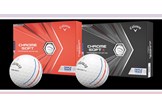 Callaway Chrome Soft and Chrome Soft X Triple Track golf balls.
Callaway Chrome Soft and Chrome Soft X Triple Track golf balls.
-
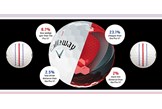 Callaway Chrome Soft facts
Callaway Chrome Soft facts
-
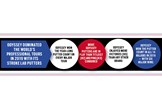 Odyssey Stroke Lab putters dominated the world's tours in 2019..
Odyssey Stroke Lab putters dominated the world's tours in 2019..
-
 Odyssey Triple Track Double Wide Flow Neck and Double Wide.
Odyssey Triple Track Double Wide Flow Neck and Double Wide.
-
 Odyssey Triple Track Seven.
Odyssey Triple Track Seven.
-
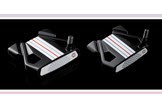 Odyssey Triple Track Ten and Ten S.
Odyssey Triple Track Ten and Ten S.
-
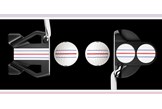 Odyssey Triple Track putters form the perfect aligment partnership with Callaway Triple Track balls.
Odyssey Triple Track putters form the perfect aligment partnership with Callaway Triple Track balls.
-
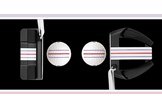 Odyssey Triple Track putters form the perfect aligment partnership with Callaway Triple Track balls.
Odyssey Triple Track putters form the perfect aligment partnership with Callaway Triple Track balls.
-
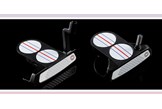 Odyssey Triple Track 2-Ball Blade and 2-Ball.
Odyssey Triple Track 2-Ball Blade and 2-Ball.
-
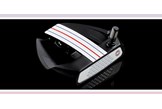 Odyssey Triple Track Marxman.
Odyssey Triple Track Marxman.

